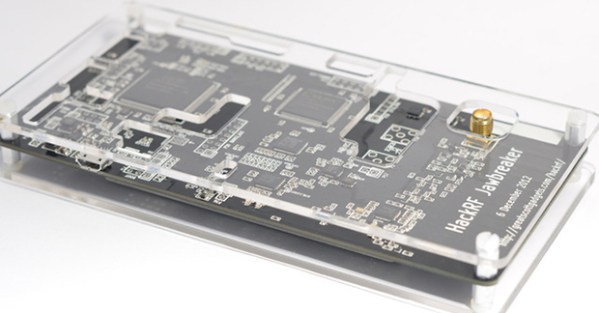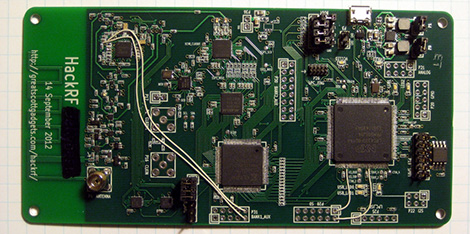Up on Kickstarter, [Michael Ossmann] is launching the HackRF, an inordinately cheap, exceedingly capable software defined radio tool that’s small enough to lose in your laptop bag.
The HackRF was the subject of a lot of interest last time it was on Hackaday – the ability to receive up to 6GHz allows the HackRF to do a lot of very interesting things, including listening in on Bluetooth, WiFi, and 4G networks. Also, the ability to transmit on these frequencies means a lot of very interesting, and quite possibly slightly evil applications are open to anyone with a HackRF. Like the RTL-SDR dongles, the HackRF works with GNU Radio out of the box, meaning all those cool SDR hacks we’ve seen so far will work with this new, more powerful board.
Compared to the USB TV tuner cards that were so popular a year ago, the HackRF has 10 times the bandwidth, is able to receive up to 6GHz, and is also able to transmit. It’s only half-duplex, so to receive and transmit simultaneously you’ll need two HackRFs, or maybe wait for a hardware revision that will hopefully come sooner rather than later.
Below you can check out [Michael]’s presentation at Toorcon where the HackRF was unleashed to the world.












